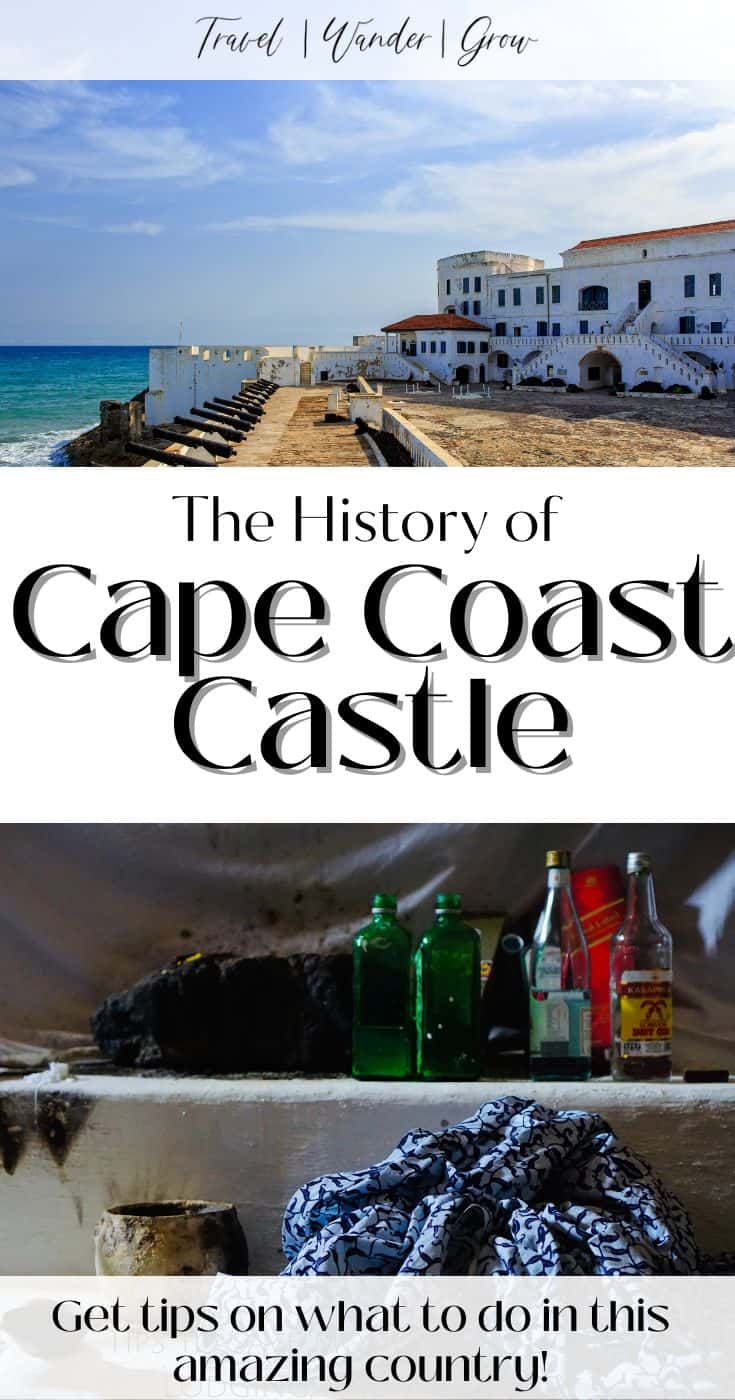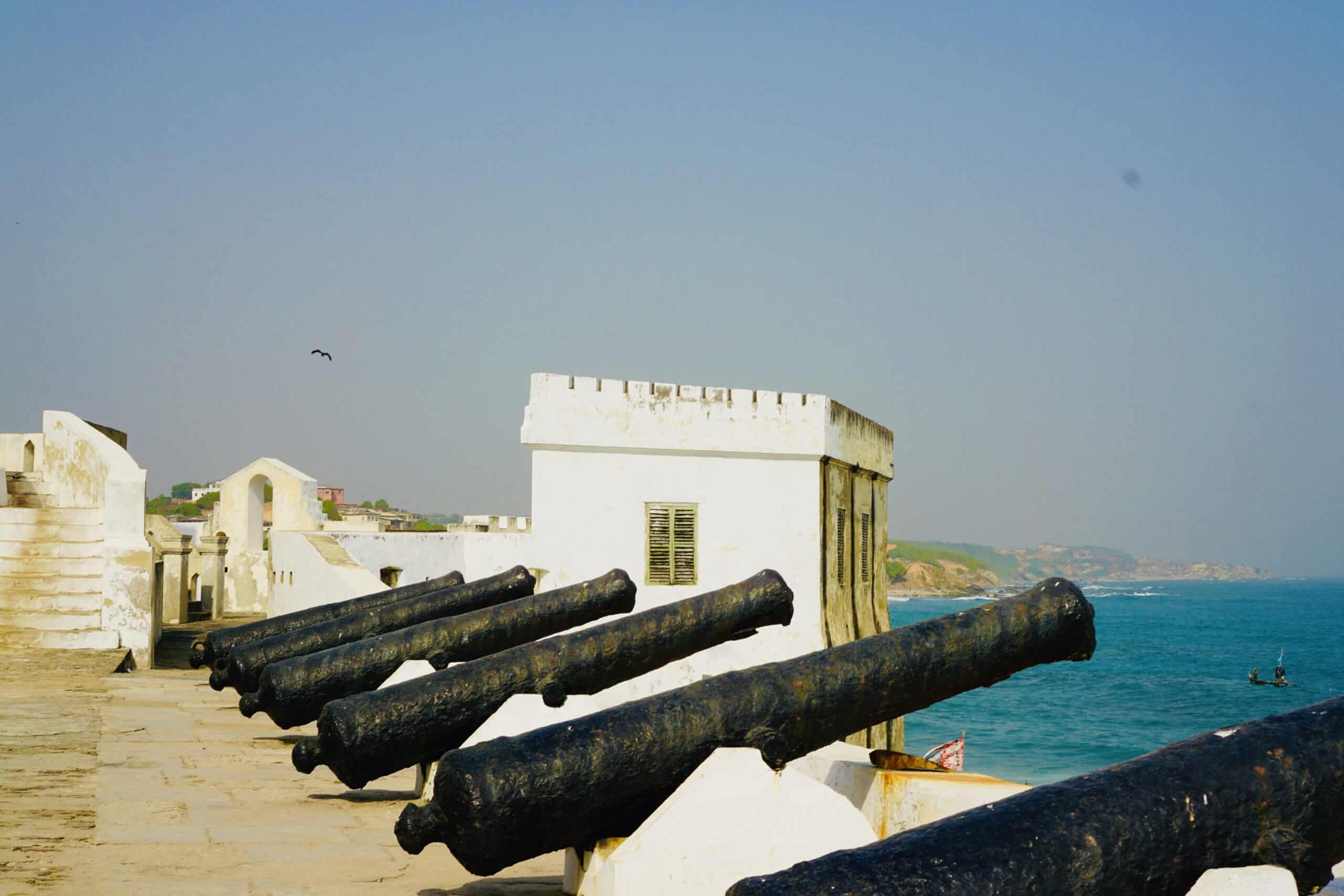The History of Cape Coast Castle | Ghana’s Top Attraction

Cape Coast Castle, located in what is now Ghana, is a prominent historical site that dates back to the 17th century. Constructed by Swedish traders for the trade of timber and gold, the Castle later became one of the principal conduits for the transatlantic slave trade.
Overlooking the Atlantic Ocean, the imposing whitewashed fortress has witnessed a tumultuous history, serving as a hub of European colonialism in West Africa. Today, the Castle stands as a UNESCO World Heritage Site, serving as a solemn reminder of a tragic chapter in human history. Keep reading to learn more about the history of Cape Coast Castle and the impact that it has had in shaping the experiences of the African diaspora.
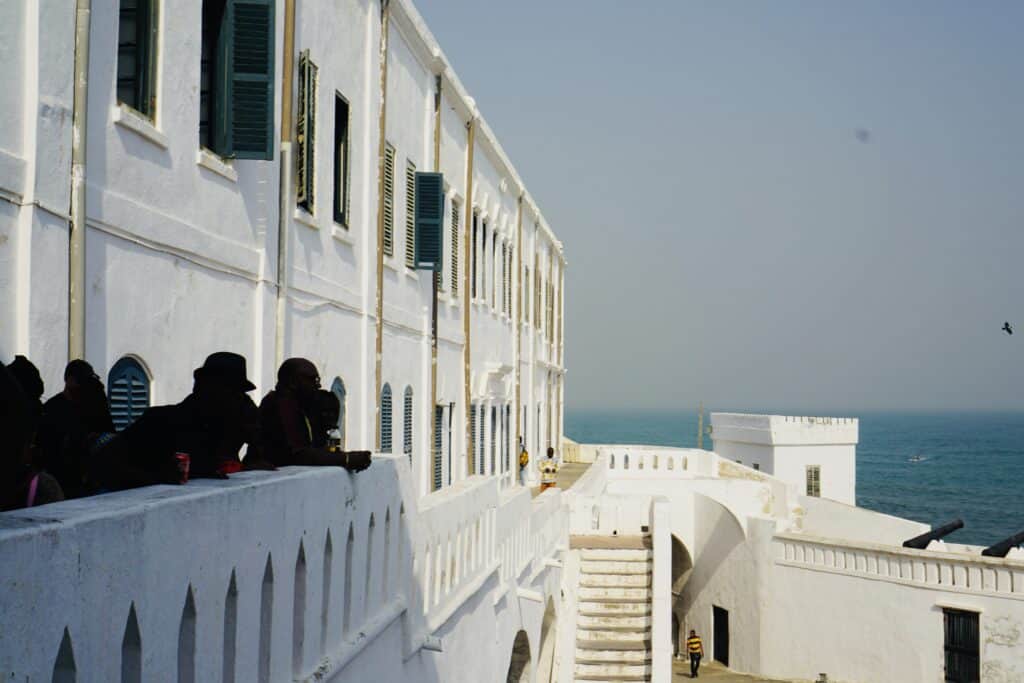
Construction of Cape Coast Castle
The construction of Cape Coast Castle began in 1653, initiated by the Swedish Africa Company, and was completed in 1665. Originally named Carolusborg after Charles X of Sweden, the fort had been intended as a trading post for gold and timber.
The architecture reflected this purpose, with a design more suitable for commercial activities than military defense. However, the Castle underwent many modifications and expansions over the years, notably by the Dutch and British, which transformed it into a formidable stronghold.
The strong fortifications and strategic location of Cape Coast Castle soon attracted the attention of other European powers. After changing hands several times between the Swedish, Dutch, and Danish through various conflicts, it was finally captured by the British in 1664.
The British further expanded the Castle to accommodate the rapidly growing slave trade, adding dungeons, barracks, and auctioning areas. The Castle, as we see it today, is largely a result of British modifications, bearing the architectural imprint of a dark historical purpose.

Cape Coast Castle as a Trading Post for Commercial Goods
Before its infamous history as a significant node in the transatlantic slave trade, Cape Coast Castle was initially intended as one of the local trading posts for commercial goods. The Swedish Africa Company designed and built the structure with a focus on trading mineral resources like gold as well as natural resources like timber, all valuable commodities from the West African region.
The original architectural design reflected this commercial purpose, with features facilitating storage, merchandising, and negotiation of trade deals. Its coastal location provided easy access to shipping routes, enhancing the fort’s functionality as a bustling trading post.
This primary use was soon overshadowed as the Castle’s strategic position and strong fortifications attracted European traders, marking the beginning of its dark transformation into a symbol of human suffering and exploitation.
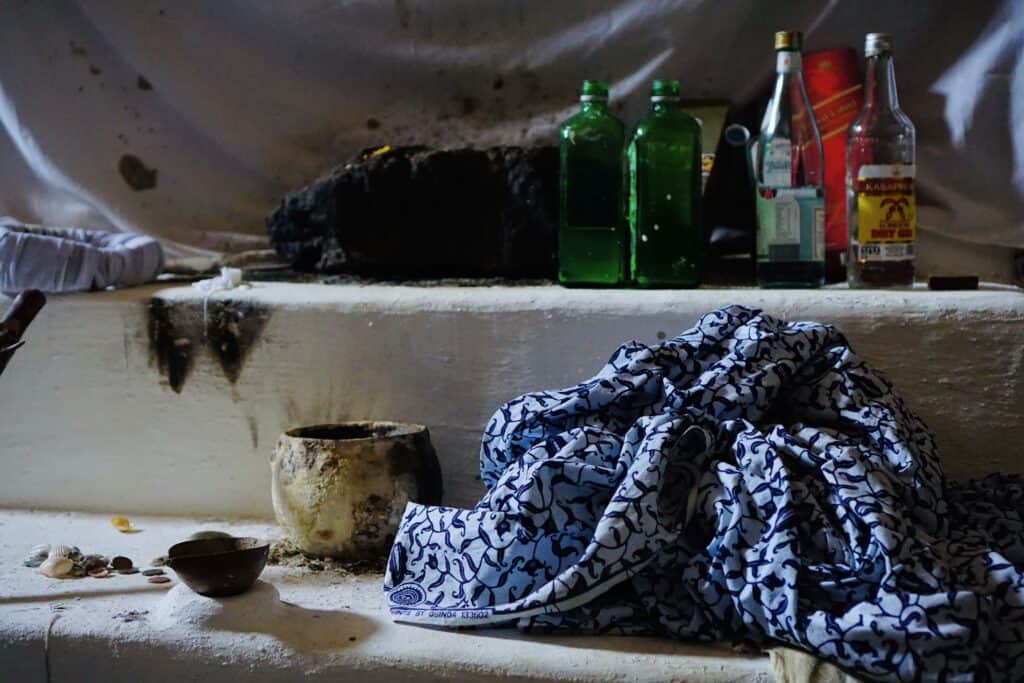
Transition to a Slave Castle
The shift in Cape Coast Castle’s use from a trading hub to a slave castle was primarily driven by economic and geopolitical factors during the 17th century. The burgeoning European colonies in the Americas created an increased demand for labor-intensive crops such as sugar, tobacco, and cotton.
The indigenous population of these colonies was decimated by diseases brought from Europe, and the Native American population proved insufficient for labor needs. African slaves were seen as the solution to this labor shortage, initiating the transatlantic slave trade.
Cape Coast Castle (as well as nearby Elmina Castle), with its strategic coastal location and robust fortifications, was perfectly positioned to become a pivotal point in this inhuman trade, serving as a holding and shipping point for countless African men, women, and children who were forcibly taken from their homes and sold into slavery.
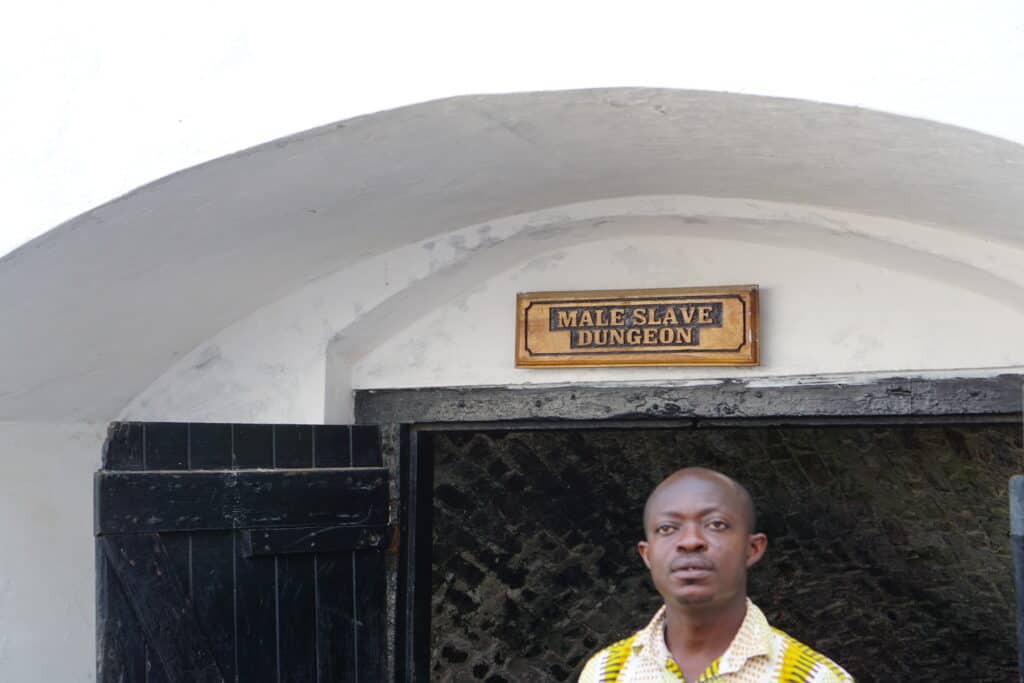
Structural Changes to the Castle
The transition of Cape Coast Castle into a hub for the slave trade was marked by a disturbing change in its architectural layout and use. The British, following their capture of the Castle, constructed dungeons with deplorable conditions to hold thousands of captured Africans who were set to be sold into slavery.
These dungeons were stark contrasts to the previously built storage areas for commodities, with their dark and cramped spaces designed to dehumanize and degrade. The auctioning areas, where humans were bartered and sold like goods, became a grim testament to the Castle’s new function. Thus, Cape Coast Castle was tragically transformed from a commercial hub into a monument of the horrific transatlantic slave trade.
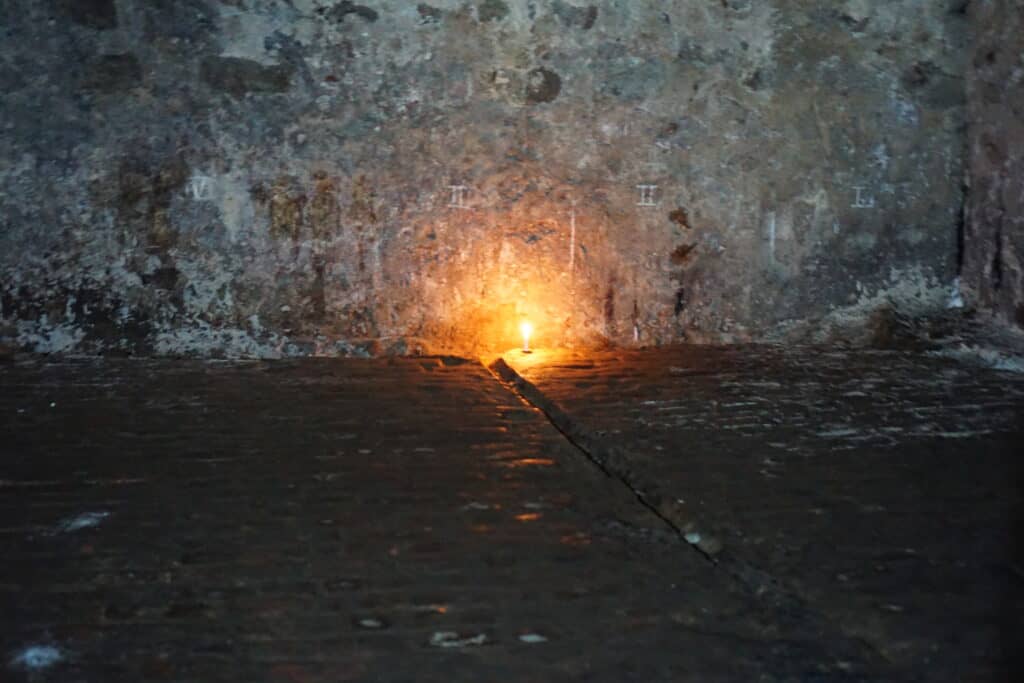
Living Conditions for Slaves in Cape Coast Castle
The living conditions for slaves held in Cape Coast Castle were horrendous and utterly inhumane. The castle’s dungeons, designed to hold between 1000 and 1500 slaves at a time, were nothing more than dark, airless pits devoid of basic sanitation. Men, women, and children were packed into these squalid spaces, with barely enough room to sit, let alone lie down.
The conditions were so appalling that disease was rampant, and many captives did not survive their imprisonment. As an example, I learned on my tour there that there is evidence that human waste in the mass cells rose nearly knee deep, as the enslaved people there had to stand in their own filth for extended periods of time.
And despite the castle’s location by the sea, the prisoners had no view of the outside world while staying in the dark dungeons found there. Their only glimpses of sunlight were brief moments as they were led through the infamous ‘Door of No Return’, a chillingly named portal through which they were loaded onto slave ships, bound for a life of forced labor in the New World (i.e., North America and South America).
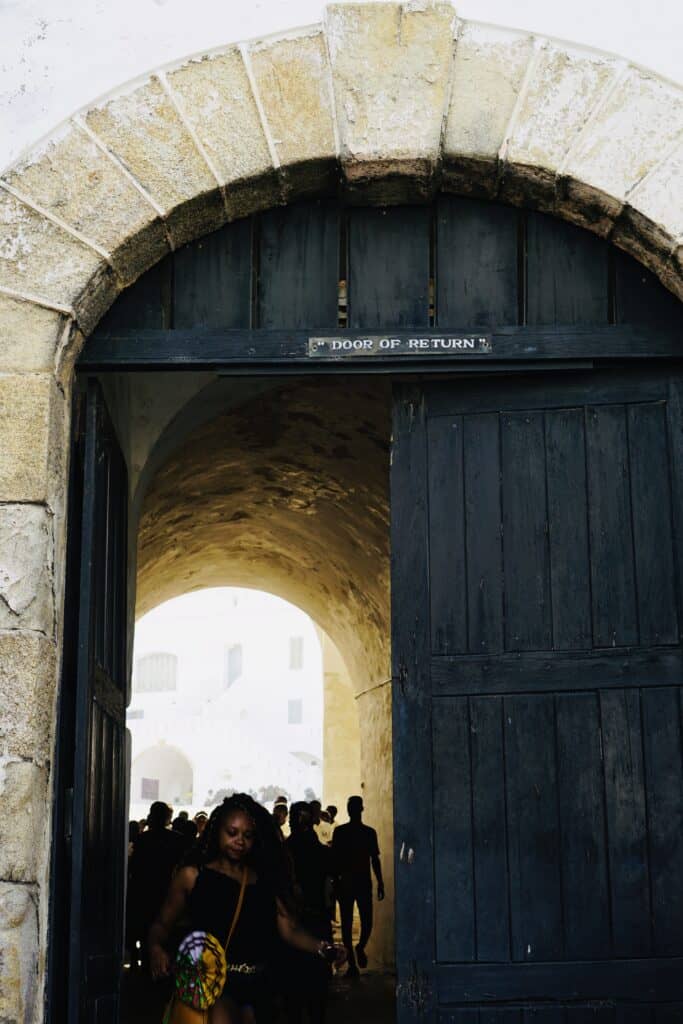
Role of Slave Castle in the Transatlantic Slave Trade
There were several “stages” if you will, from getting slaves from Africa to the new world. After capture of the African natives, they were then force to walk miles to Assin Manso for the last bath.
From there, they were forced to walk many more miles to one of the slave castles, like Cape Coast Castle. Here, they would be forced to live in chains for months while they waited for the right conditions for traveling across the Atlantic.
So essentially, Cape Coast was the the midway point on the way to the “New World” and the step before the middle passage – another horrifying aspect of the trans-atlantic slave trade.
Facts about Cape Coast Castle
Here are a few key facts about Cape Coast Castle:
Cape Coast Location
Cape Coast Castle is strategically situated in Cape Coast, the capital of Central Region of Ghana, West Africa. It’s positioned on a rocky outcrop overlooking the Atlantic Ocean, providing a panoramic view of the sprawling coastlines. The then Gold Coast was known for the wealth of resources found there, which is why European nations were scrambling to colonize Africa in those times.
This location on the coast of Ghana was crucial, not only for its natural defensive advantages against potential attacks, but also for ease of accessibility to the sea, facilitating the tragic transport of captured Africans during the transatlantic slave trade.
Cape Coast Castle Size
The Cape Coast Castle covered a significant area of approximately 130 by 70 meters, designed to house a garrison, a church, living quarters, storage facilities, and of course, the infamous slave dungeons.
The castle’s vastness wasn’t merely for ostentation; it was a strategic decision. Large courtyards facilitated the assembling of slaves before their forced departure. The three-story main building provided living quarters for the Governor and his staff, underscoring the fact that this massive structure was not just a warehouse of human misery, but also a center of colonial power.
Dates in use
The Cape Coast Castle was constructed by the Swedes in 1653, and its use spanned more than three centuries. During this period, it changed hands among several European powers, including the Dutch, the Danes, and finally, the British. The heinous trade of human beings, for which the castle is infamously known, occurred primarily during the 17th century and the 18th century.
In 1807, Britain abolished the slave trade, marking the end of the castle’s darkest chapter. However, the structure continued to serve as the seat of British colonial administration in the Gold Coast until 1877.
After Ghana’s independence from British colonial rule in 1957, the castle took on new roles, including serving as a historical museum to educate the public about the horrors of the transatlantic slave trade. To this date, there the socioeconomic impacts on Ghana are still impacting the country today, although that is changing today.

Visiting the Cape Coast Slave Castle Today
Visiting the Cape Coast Castle today presents an opportunity for a profound connection with a deeply significant chapter of human history. Open to the public, the castle runs guided tours that provide insightful narratives about the building’s historical context and the inhumanity of the slave trade it facilitated. It is a very important tourist attraction in Ghana, if not one of the most famous ones in the country.
The Cape Coast Castle museum, spread over several floors of the main building, houses exhibits of poignant artifacts and detailed historical accounts. Visitors can explore the chilling dungeons and the “Door of No Return,” each echoing the harrowing experiences of countless enslaved Africans. There is also a gift shop onsite, where you can purchase local items that support the upkeep of the building.
Located in Cape Coast, Ghana, the castle is easily accessible via road from major cities like Accra. It is recommended to allot a few hours to fully absorb the weight of the history contained within these walls. All visitors are advised to respect the solemnity of the site, bearing in mind the unimaginable human suffering that took place here.
I visited this site recently myself, and this along with Elmina and Assin Manso were some of the most moving travel experiences I’ve had to date. As a women of African decent, I know some of my own ancestors had to go through the terrible experiences mentioned here in order for me to be alive today.
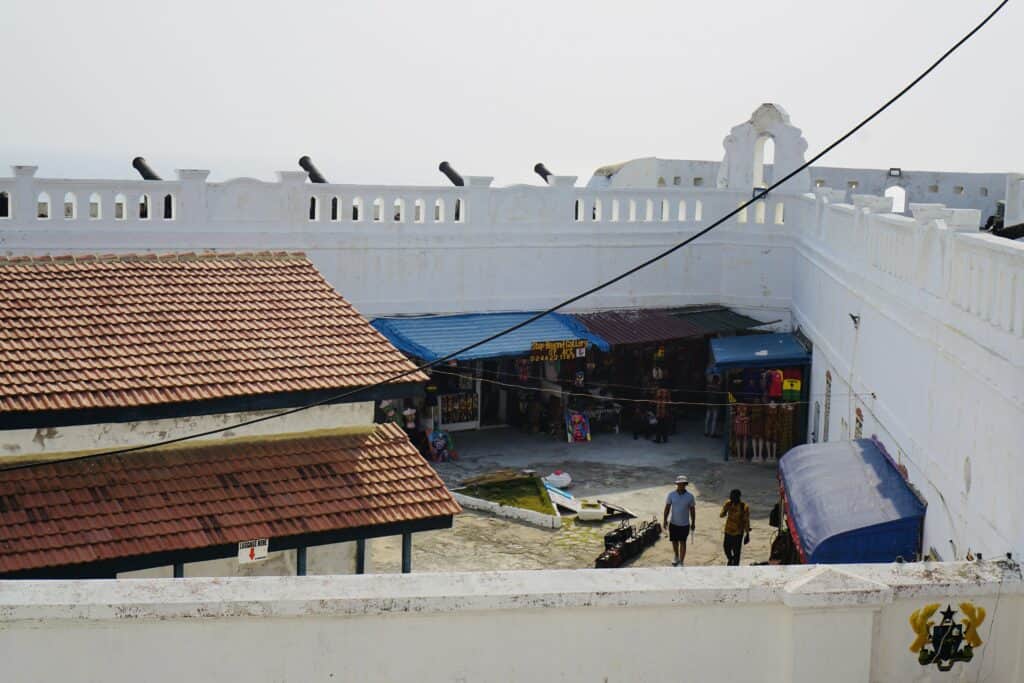
The Best Cape Coast Tour
If you are fortunate to visit this site, I highly recommend you take a guided tour of the Cape Coast Castle. I did this when I was there, and found it incredibly insightful. Our tour guide did a great job of painting a picture of what life was truly like there for the people that were held capture there.
Know that if you book your tour in advance, the entrance fees will be covered as part of the full experience, along with transportation from where you are staying. If you are staying in Accra, there are also a variety of ways to get from Accra to Cape Coast as well, given that it is where most start their trip to Ghana.
The Cape Coast Day Tour
⭐️⭐️⭐️⭐️⭐️
Explore the cultural heritage of Cape Coast by visiting the castles there on this round trip tour from Accra to Cape Coast. In addition to transportation to a variety of sites, you’ll get a private tour guide as well.
During this experience you will:
- Vist Cape Coast Castle
- Visit Elmina Castle
- Visit Kakum National Park
- Visit Has Cottage Botel
Admission to each of the sites, round trip fare from Accra to Cape Coast, as well as drinks and snacks are included in the price of the tour.
Frequently Asked Questions about Cape Coast Castle
Historical estimates suggest that over the course of three centuries, as many as 12 million Africans may have passed through the doors of various castles along the West African coast, including Cape Coast Castle. The exact number that passed through Cape Coast Castle specifically is difficult to determine with certainty. However, it undoubtedly played a significant role in this tragic period of human history.
The remains of those who died at Cape Coast Castle during its time as a slave trading post are buried in the dungeons and walls of the castle. It is believed that hundreds, if not thousands, of souls were laid to rest here in unmarked graves.
In Summary | The History of Cape Coast Castle
In conclusion, Cape Coast Castle stands as a significant reminder of a dark period in history, illustrating the severity and vastness of the transatlantic slave trade. A visit to this site is both a humbling and enlightening experience, prompting introspection and a renewed understanding of the endurance of the human spirit in the face of unimaginable adversity. By learning about and remembering the past, we can strive towards a future that values, respects, and upholds the dignity of all humanity.
Related Posts on Ghana:
- One Week in Ghana
- Historical Sites in Ghana
- Assin Manso River Slave River Tour
- Where to Eat in Accra
- Is Ghana a Third World Country?
- How to travel from Accra to Cape Coast
- The Best Places to visit in Accra
- Tourist Sites in Ghana
- The History of Elmina Castle
African Travel Guides
